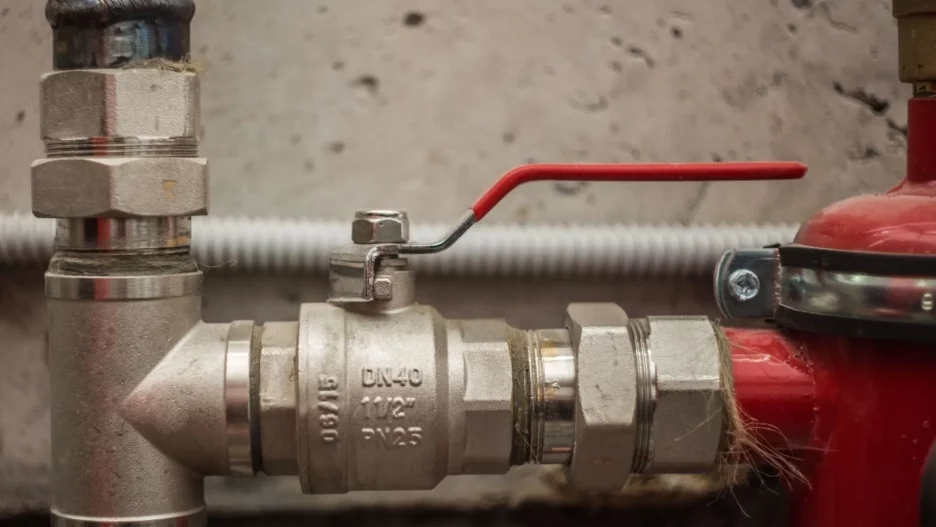Living in a house and knowing how a house works are two different things. Knowing the details about how your systems work can help you maintain the home and thwart potential problems—or teach you how to react to a disastrous event. Here is what everyone should know about their home ahead of an emergency.
Know Where the Water Main is Located, and How to Shut It Off
If there is a leak, or heaven forbid, a pipe bursts in your home, you need to go to the source — where the water enters your home – and shut off the main valve. Take time to locate where the water main valve is, and mark it clearly. You won’t have time to look for it in an emergency.
The main water shutoff valve could be located in different locations in your home. For homes with a basement or crawlspace, it is likely located on an interior wall at the front of the house. Or it could be located near your hot water heater or in your garage. On rare occasions, it is located outside the home.
The shutoff valve generally comes in two styles: one with a ball valve and lever, and another with a gate or “wheel” valve. Turn the shutoff valve clockwise to inhibit the water flow.
Know Where the Water Isolation Shutoff Valves are Located
In addition to the main water valve, isolation shutoff valves are located near water sources like toilets, sinks, water heaters and washing machines. Turning those clockwise will shut off the water flow to those plumbing features and appliances individually. NOTE - we recommend use of these valves only when absolutely necessary since they are often not made for frequent use and may leak.
Know Where the Main Electric Shutoff Is
Your electricity runs into your home through a breaker box. Know where this box is located, and learn how to turn off the main breaker switch to cut electricity to all portions of your home. It can be located in the basement, garage, near the electric meter, or somewhere else in your home. If you’ve blown a fuse in one room, see sparks coming from a wall outlet or flames from an appliance like your microwave, or need to work on an individual electrical issue, also know how turn off the individual breaker to that room. Test and label each breaker if it is no already indicated so that you can locate the right one in an emergency.
Know Where the Gas Shutoffs Are
If you have gas appliances like a stove or water heater and want to cut the gas supply, look behind the appliance for a valve. Turn the valve clockwise to shut off the flow. Do not attempt to shut off the gas supply to your entire house. Leave that to a gas company professional.
Understand How Your Smoke Alarm and Carbon Monoxide Detectors Work
You should have active smoke alarms and carbon monoxide detectors on each floor of your home, and learn the warning sounds that each makes. It can make the difference between life and death in an emergency situation. Change the batteries when the time changes, and test the batteries in between changes. Ensure that you can hear the alarms from each room with the doors closed.
Know Your Fire Escape Routes
We practice evacuation routes in school, but not in our homes—where fires are more likely to happen. You must know how and where to exit quickly from each room in case of a fire or other emergency. Each room, and each sleeping area, should have two areas of egress that lead directly to the exterior. Normally, a door and a window. Practice with your family how to open a window, and learn how to quickly remove a screen or storm window and how to lower yourself to the ground outside. If you are on a second or third floor, it may be wise to invest in a portable fire ladder for each room that can be hooked to the window if disaster strikes.
Learn How to Use Your Fire Extinguisher
Keep a fire extinguisher in rooms where flames are used, like in a kitchen or workshop, and teach adults how to operate it. Children should always evacuate in case of fire, and not try to extinguish it themselves. The National Fire Protection Association uses the acronym PASS to describe an extinguisher’s use.
P = Pull the pin, aim the nozzle away from you and release the locking mechanism
A = Aim low at the base of the fire
S = Squeeze the lever slowly and evenly
S = Sweep the nozzle from side to side
Use the Correct Light Bulb Wattage
Surprisingly, fires can be started by using a lightbulb with a higher-than-recommended wattage in an outlet. The proper wattage should be indicated on the fixture. If unmarked, err on the side of caution with a bulb under 60 watts. Avoid using compact fluorescent lamps (CFLs) in a lighting unit where the bulb’s base is enclosed by the fixture, as with track or recessed lighting. Use LED bulbs instead.
Golden Rule Home Watch Wants to Protect Your Home
At Golden Rule Home Watch & Concierge, we make it one of our first priorities to locate these essential elements of your home. We may encounter an emergency while checking your house! And we encourage you to learn where they are as well. Protect your family and your home by planning and practicing ahead of an emergency.
When you need to protect your home when you’re away, rely on Golden Rule Home Watch services. We’ll make regular visits to your house to monitor for proper operation, problems, or just to collect the mail and check up on things. It’s a safe way to eliminate worry while you’re traveling.
Contact Golden Rule Home Watch for a free initial consultation at 855-928-2424.




